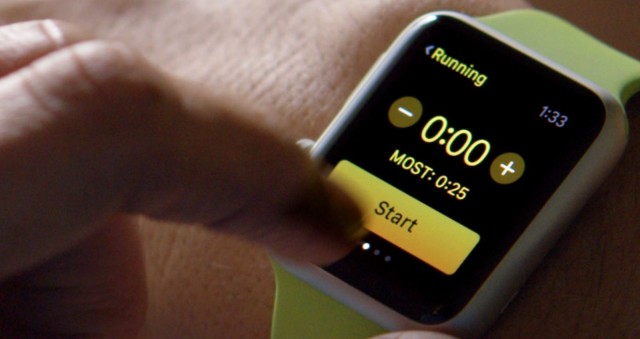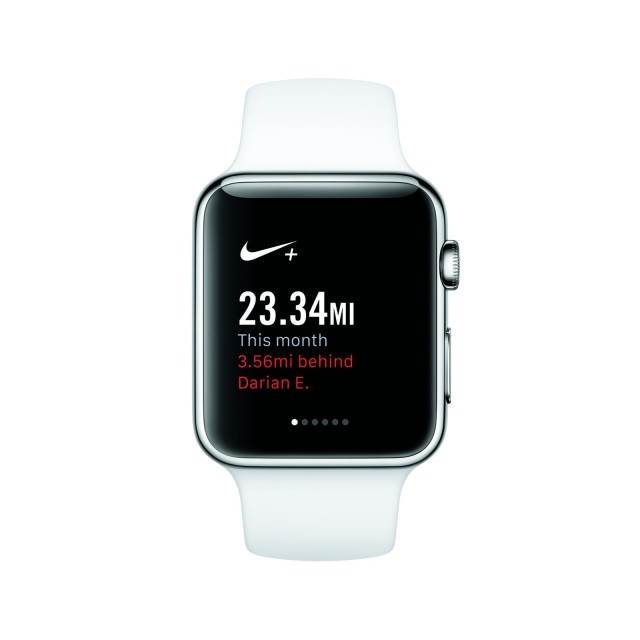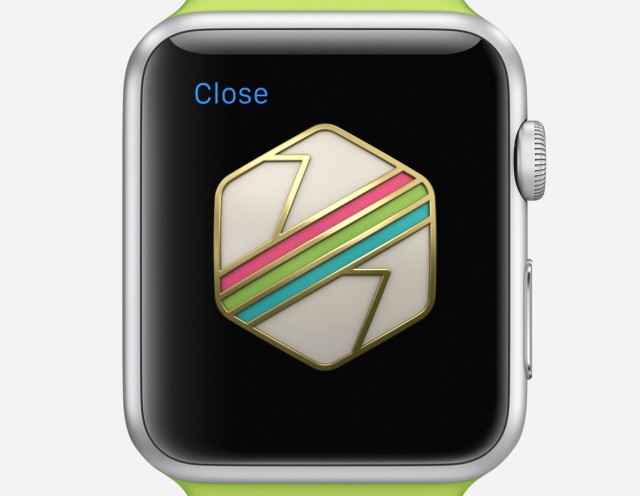If you bought an Apple Watch hoping it would help you get fit, but you haven’t been on your first run yet, maybe you need of a little more encouragement. So here’s some advice from a reformed couch potato.
The first workout is the hardest. It gets progressively easier and more rewarding from there. You just need to know how to get started.
Your first run is an “open goal”


When you start a run, Apple Watch will ask you to set a goal. Don’t. At least, not at first.
Apple has designed its Fitness app with goal-setting in mind. Which is not good for beginners, because when you’re are just starting, you don’t know what a realistic goal is for you.
We are all different. Our bodies are different. Even when you’ve completed your first few runs, you still don’t know your true potential. So, when you launch the Fitness app and choose “Outdoor Run,” swipe across to the right and select “Open – no goal.” Then see how far your legs will take you.
Apple does not seem to have given the open goal mode much attention. There is a big gap in the middle of the screen where the goal ring normally appears. Which is a shame, because the information you really want to see – like how far and how fast you are going is in small, awkwardly laid out type as a result, making it hard to read when you are jogging along.
But aesthetic considerations aside, the open goal is still your best option when you are getting started.
Start small and ratchet up
It does not really matter how far or how fast you go on your first few runs. At this stage, the most important thing is that you get out there and do it regularly. You are simply establishing a running habit and finding out what you are capable of.
When I began running, the best I could manage was a single lap around the block. And I was panting, aching and exhausted by the end of it. But I did what I could manage. And I stuck to my plan of running every day.
Over time, I was able to do more. One lap became two laps. Then three and four. Eventually I was running 7 miles a day. A habit I’ve now maintained for several years. But it all began with a few yards around the block.
Think of it like a ratchet – something that can only go forwards, never backwards. Each time I added a lap to my run, I told myself I could not go back. From now on, I was doing at least that many laps each time I ran. This helped me to keep progressing.
When you get to this stage, the Apple Watch’s goals become useful. Now you can set your goal based upon what you did on your previous run, and tell yourself that you must match or exceed that goal. Apple’s Fitness app is ideally suited to this kind of “ratchet” approach.
Your first run is the hardest. It gets easier from there.
If you’ve never run before, then the truth is, getting started will be tough.
I remember on my first run, I could only manage one lap around the block, and my legs were in agony. I discovered muscles I didn’t know I had, and they were complaining about being suddenly called into service.
As you get used to running, it gets much easier. But here’s the thing: a tough experience is not necessarily a bad experience. The belief that we should avoid any kind of suffering and instead seek an easy life filled with short-term pleasures is what stops us from achieving our goals.
Your Apple Watch measures the calories you burn and the distance you cover. It won’t measure your suffering. The aches. The pains. The feeling of burning throughout your body due to the levels of lactic acid rising in your bloodstream as you push your muscles to their limits.
But it also doesn’t measure the feeling of elation when you know you are genuinely achieving your potential. That is greatest natural high on the planet. If you talk to any regular runner, the odds are they will laugh about all the pain they have been through. It is just a part of running, and somehow the bad stuff is also the good stuff.
If running was easy, with no suffering involved, no one would need motivating to do it and there would be no reason to write this article. Everyone would be running all the time. The suffering is what gives running its meaning.
So, prepare yourself mentally for a little suffering along the way. Tell yourself that a tough experience can also be a good experience. And smile.
Choosing your running app

It is surprising how quickly your running history builds up. And since you can’t always transfer data from one app to another, there is a risk you’ll become locked-in to the platform you start running with.
So it is a good idea to decide early on which app you prefer.
Apple’s built-in Fitness app has many advantages. You can us it without taking your iPhone with you on the run. And it can log indoor runs on a treadmill. But it does not currently offer GPS mapping, and it doesn’t have any social features.
Third party apps like Nike+ Running and Strava provides GPS maps and social features, so you can compete with friends. But due to limitations in WatchKit, the framework Apple provides for 3rd party watch app developers, they all suffer from a lag when you raise your wrist, while the app wakes up and wirelessly reconnects with your iPhone to get the latest data. This situation should improve with watchOS 2, which includes the new WatchConnectivity framework and native watch apps.
My advice would be to find which app your friends are using and use that.
Do it because you love it. Running should be its own reward.

When people tell me about their fitness goals, there is one expression I always listen out for, because it tells me they are running into trouble: “I’ve been good, I deserve a treat.”
The trouble is, that “treat” is frequently something edible and the calories you consume as a result may be more than you burned in your run, leaving you further from your goals.
But worse than that, if you are rewarding yourself for running as though it’s something you don’t enjoy, then at some point you’ll stop. It is inevitable. You’ll find an excuse to miss a day. And then another excuse and another. And before you know it, you’re not running anymore.
So don’t keep checking your Apple Watch, waiting for the goal ring to complete. Keep your head up with a smile on your face, take in the scenery and enjoy your run.
Running should be its own reward. That way you will stick to it, and you are certain to achieve your goals.
Keep it between you and your Apple Watch
When you decide to get in shape, it is tempting to tell everyone about it. After all, it is a major life-changing decision. But from personal experience, I’d recommend against this. At least at first. The trouble is, they’ve probably heard it all before.
The road to fitness is paved with good intentions. Many people talk about their goals, but far fewer actually stick to them and achieve results. It’s all too easy to become jaded as a result.
When I told my friends I was going to get fit, they said encouraging things, but I could tell they didn’t really believe me. Their tone and body language gave out a different message: “good luck with that.”
And who could blame them? I’d been a couch potato my whole life. Why the sudden change now? Their cynicism was entirely understandable, but it was also toxic – it sowed the seeds of doubt in my mind too. I had many false starts as a result. And when I finally began my fitness journey, I started it in secret.
Only tell your friends when you have something tangible to show for your efforts. Like an iPhone screen full of shiny achievement medals in the Activity app. Or better still, wait until they notice you’ve lost weight and ask what your secret is.
Once exercise has become a regular habit, it’s safe to talk about it. And then it can be great to share your progress with like-minded friends, so you can challenge and motivate each other.
Until then, keep it between you and your Apple Watch. It’s your secret.
So don’t talk about it. Just do it.



